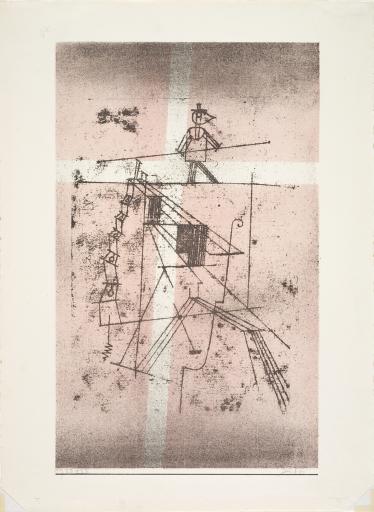Der Seiltänzer (Tightrope Walker), Paul Klee
Artwork Overview
Paul Klee, artist
1879–1940
Der Seiltänzer (Tightrope Walker),
1923
Where object was made: Switzerland or Germany
Material/technique: lithograph; laid paper
Dimensions:
Image Dimensions Height/Width (Height x Width): 434 x 268 mm
Image Dimensions Height/Width (Height x Width): 17 1/16 x 10 9/16 in
Sheet/Paper Dimensions (Height x Width): 520 x 381 mm
Sheet/Paper Dimensions (Height x Width): 20 1/2 x 15 in
Mat Dimensions (Height x Width): 25 x 20 in
Image Dimensions Height/Width (Height x Width): 434 x 268 mm
Image Dimensions Height/Width (Height x Width): 17 1/16 x 10 9/16 in
Sheet/Paper Dimensions (Height x Width): 520 x 381 mm
Sheet/Paper Dimensions (Height x Width): 20 1/2 x 15 in
Mat Dimensions (Height x Width): 25 x 20 in
Credit line: Museum purchase: Helen Foresman Spencer Art Acquisition Fund
Accession number: 2006.0099
Not on display
If you wish to reproduce this image, please submit an image request




